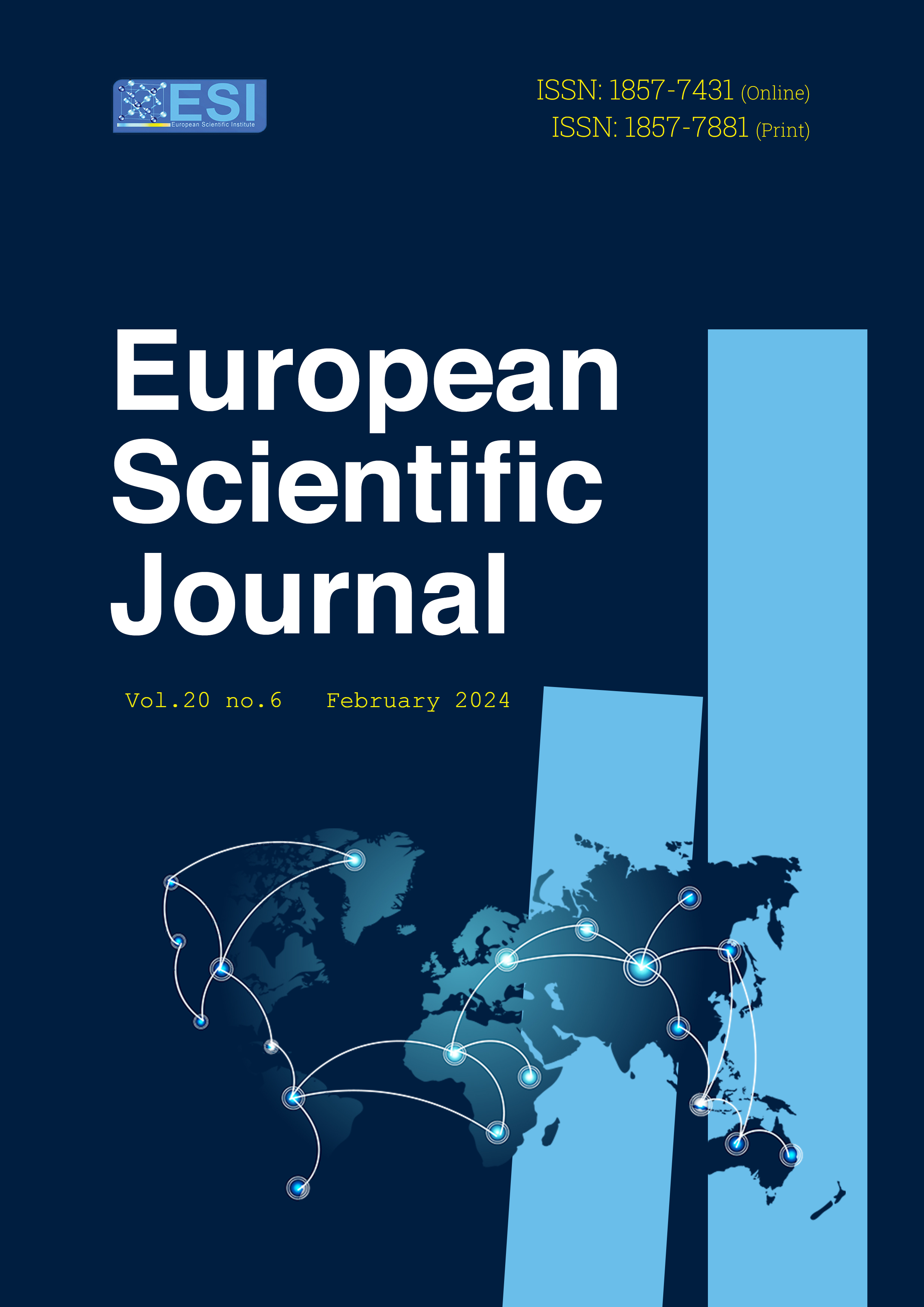Harmonizing Aesthetics and Psychological Well-being: An Indepth Exploration of the Integrative Impact of Dysport in Cosmetic Procedures
Abstract
This research delves into the intricate interplay between aesthetic intelligence, aesthetic sensitivity, and psychological well-being within the framework of positive psychology, with a particular emphasis on the integrative impact of Dysport in cosmetic procedures. By recognizing the significant influence of environmental aesthetics on individual health and well-being, this study seeks to illuminate the relationship between aesthetic intelligence and psychological well-being while considering the role of Dysport in cosmetic procedures. Employing a correlational research design, structural equation modeling was utilized as the methodological approach. The research cohort comprised all students enrolled at Bu-Ali Sina University during the academic year 2018-2019. Employing cluster sampling, 384 students were selected based on the recommended sample size for structural equation modeling. The instruments included the Ryff Well-being Scale, the Aesthetic Intelligence Scale developed by Rashid et al., and Abdulsalami's Aesthetic Sensitivity Scale. Findings revealed significant direct impacts of both aesthetic intelligence and aesthetic sensitivity on psychological well-being. Moreover, aesthetic intelligence demonstrated a direct and significant effect on aesthetic sensitivity. Exploration of indirect relationships indicated that aesthetic intelligence, mediated by aesthetic sensitivity, significantly influenced psychological well-being. These findings underscore the importance of individuals' awareness and appreciation of environmental beauty, including the role of Dysport in cosmetic procedures, in positively contributing to psychological well-being.
Downloads
Metrics
PlumX Statistics
References
2. Burns N, & Grove S. K. (2019). Understanding nursing research: Building an evidence-based practice (5th ed.). MO: Elsevier Health Sciences.
3. Chatterjee, A. (2012). Neuroaesthetics: Growing pains of a new discipline. In A. P. Shimamura & S. E. Palmer (Eds.), Aesthetic Science: Connecting Minds, Brains, and Experience (pp. 299-317). Oxford University Press.
4. Duffy, R. A. (2018). An analysis of aesthetic sensitivity and creativity with other variables in grades four, six, eight, and ten. The Journal of Educational Research, 73(1), 26-30. doi: 10.1080/00220671.1979.10885199
5. Fancourt, D., Garnett, C., Spiro, N., West, R., & Müllensiefen, D. (2019). How do artistic creative activities regulate our emotions? Validation of the Emotion Regulation Strategies for Artistic Creative Activities Scale (ERS-ACA). PLoS One, 14(2), e0211362.
6. Ferguson, C. J., Coulson, M., & Barnett, J. (2020). A meta-analysis of pathological gaming prevalence and comorbidity with mental health, academic and social problems. Journal of Psychiatric Research, 45(12), 1573-1578. doi: 10.1016/j.jpsychires.2011.09.005
7. Gardner, H. (2018). Effects of stimulus rearrangement on the development of sensitivity to painting styles. In G. Terry Suzanne, Proceedings of the Annual Convention of the American Psychological Association (Vol. 5, pp. 495-496), Washington, APA.
8. Greene, T., Gross, R., Amsel, L., & Hoven, C.W. (2018). The mental health of children and adolescents exposed to 9/11: Lessons learned and still to be learned. In A. M. Szema, World Trade Center pulmonary diseases and multi-organ system manifestations (pp. 121-136). Springer, Cham.
9. Ivon, H., & Kuscevic, D. (2019). School and the cultural-heritage environment: pedagogical, creative and artistic aspects. CEPS Journal, 3(2), 29-50.
10. Jacobsen, T. (2019). Bridging the arts and sciences: a framework for the psychology of aesthetics. Leonardo, 39, 155-156. doi: 10.1162/leon.2006.39.2.155
11. Leder, H., Belke, B., Oeberst, A., & Augustin, D. (2018). A model of aesthetic appreciation and aesthetic judgments. British Journal of Psychology, 95(4), 489-508. doi: 10.1348/0007126042369811
12. Lindauer, M. S. (2019). Toward a liberalization of experimental aesthetics. The Journal of Aesthetics and Art Criticism, 31(4), 459-465.
13. Lucas, R. E., & Diener, E. (2019). Subjective well-being. In M. Lewis, J. M. Haviland-Jones, & L. F. Barrett (Eds.), Handbook of Emotions (pp. 471-484). The Guilford Press.
14. Machotka, P. (2018). Aesthetic criteria in childhood: Justifications of preference. Child Development, 37(4), 877-885. doi: 10.2307/1126610
15. Mucha, R. T. (2019). Aesthetic intelligence cultivates an artistic mindset. Organization Development Journal, 26(3), 41-54.
16. Myers, D. G., & Diener, E. (2019). Who is happy? Psychological Science, 6(1), 10-19.
17. Ryff, C. D. (2021). Happiness is everything, or is it? Explorations on the meaning of psychological well-being. Journal of Personality and Social Psychology, 57(6), 1069-1081. doi: 10.1037/0022-3514.57.6.1069
18. Ryff, C. D. (2020). Psychological well-being revisited: Advances in the science and practice of eudaimonia. Psychotherapy and Psychosomatics, 83(1), 10-28. doi: 10.1159/000353263
19. Van Cappellen, P., Toth-Gauthier, M., Saroglou, V., & Fredrickson, B. L. (2021). Religion and well-being: The mediating role of positive emotions. Journal of Happiness Studies, 17(2), 485-505. doi: 10.1007/s10902-014-9605-5
20. Walsh-Piper, K. (2018). Museum education and the aesthetic experience. Journal of Aesthetic Education, 28(3), 105-115, doi: 10.2307/3333404
21. Wyatt T J. Oswalt, S B, Ochoa, Y. (2017). Mental health and academic performance of first-year college students. International Journal of Higher Education, 6(3), 178-187.
Copyright (c) 2024 Mehrasa Nikandish, Mohammad Nikandish, Hedayatpour Behnoud

This work is licensed under a Creative Commons Attribution 4.0 International License.








